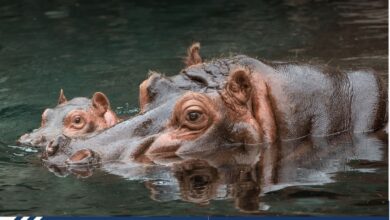The 8 different animals similar to Rhino
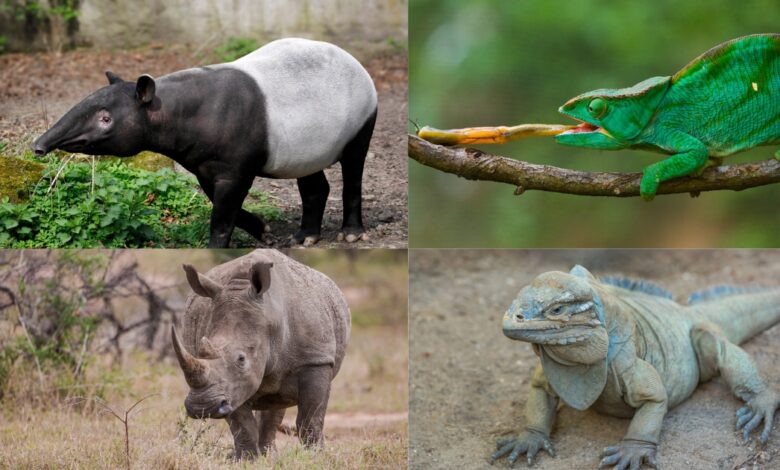
The 8 different animals similar to Rhino
The rhinoceros, or rhino, is a massive grey mammal recognized by its distinctive horn protruding from the front of its nose.
These herbivores boast tough skin, ranging from 0.5 to 2 inches thick, and graze on grasses or deftly use their lips to pluck fruit and leaves from branches. As the second-largest land animals globally, larger rhino species can weigh between 3 and 5 tons, standing over 6 feet tall.
There are five existing rhino species worldwide, with three in Asia (Sumatran, Javan, and greater one-horned rhino) and two in Africa (white and black). The Sumatran rhino, dating back nearly 15 million years, holds the title of the oldest among living rhinos, with tapirs, zebras, and horses as its closest living relatives.
Following are the 8 different types of animals similar to Rhino:
1. Rhinoceros chameleons
A unique chameleon species exclusive to Madagascar’s dry forests, earn their name from a distinctive nose reminiscent of a rhino’s horn.
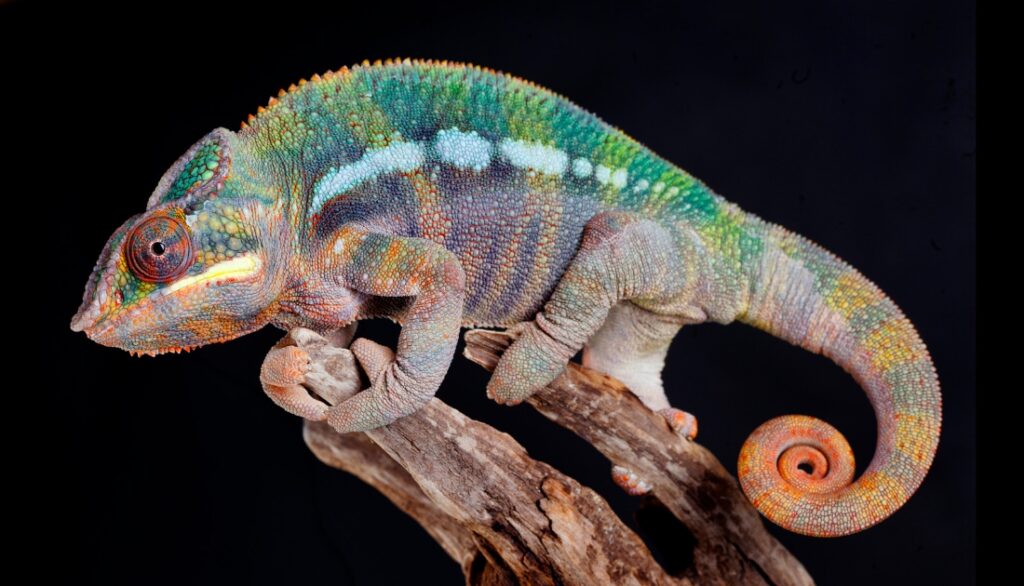
Despite their miniature size, measuring around 11 inches, these chameleons share a gray or light brown coloration with their larger rhino counterparts.
In contrast to herbivorous rhinos, these tiny chameleons have an insect-based diet, utilizing their swift tongues to capture prey.
Unfortunately, the habitats of these chameleons face threats due to logging for charcoal production and cattle grazing, leading to their vulnerable status on the IUCN Red List of threatened Species.
2. Narwhal
The narwhal, a medium-sized whale, boasts a lengthy tusk on its head reminiscent of a rhino’s horn, though it is, in fact, an enlarged tooth that can reach lengths of 10 feet.
In contrast to herbivorous rhinos, narwhals are carnivores, sustaining themselves on a diet of shrimp, fish, and squid.
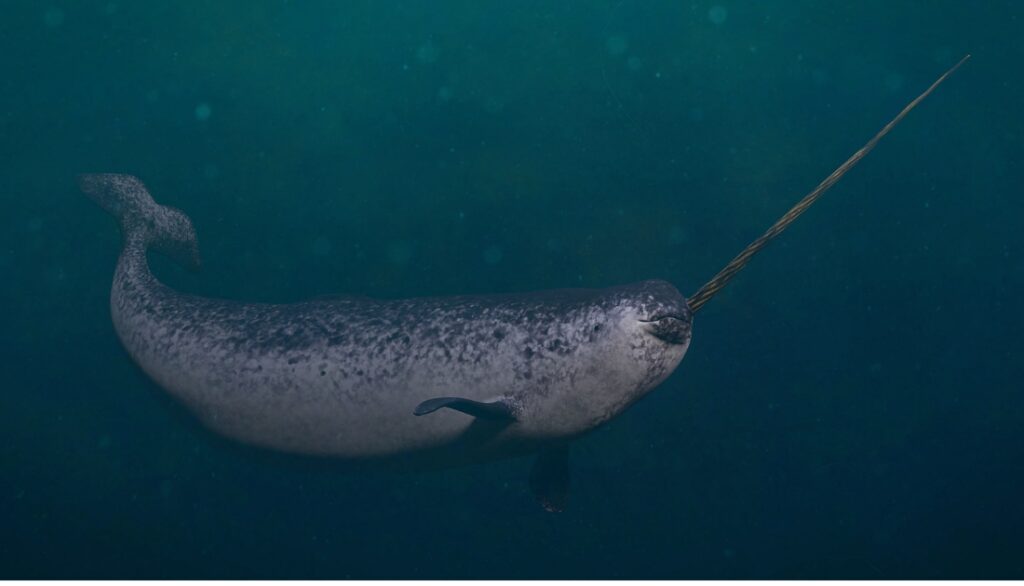
Similar to rhinos, narwhals give birth to a single calf, undergoing an extended gestation period lasting approximately 13 to 16 months.
These marine mammals inhabit the Arctic waters of Greenland, Russia, Norway, and Canada.
3. Tapirs
Tapirs, sizable herbivorous mammals residing in the forests of Central and South America and Southeast Asia, claim the title of the largest land animals in South Africa, weighing between 300 and 700 pounds.
In a parallel to rhino pregnancies, tapir gestation periods are notably protracted, lasting 13 to 14 months. Remarkably, both species give birth to a single calf. Despite the marked differences in size and appearance, tapirs and rhinos share numerous similarities, being odd-toed ungulates with feet featuring three toes.
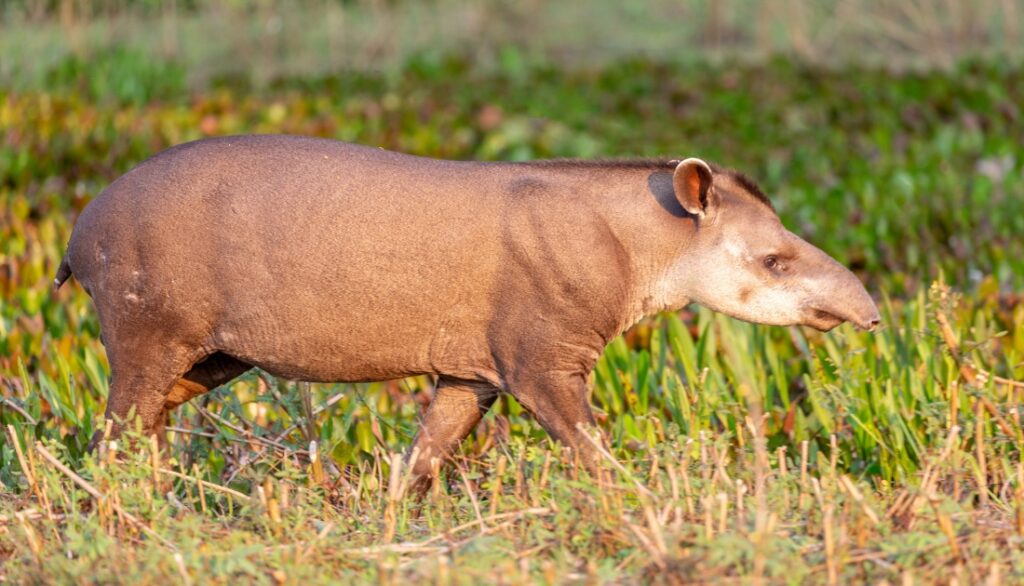
4. Zebras
Zebras, striking black-and-white striped members of the horse family, emerge as one of the closest relatives to rhinos, despite their apparent differences in appearance.
While their body shapes diverge, zebras nearly match rhinos in height, reaching up to 5 feet tall. In a shared characteristic, zebras undergo a prolonged gestation period akin to rhinos, lasting approximately 12 to 13 months, just slightly shorter than their rhino counterparts.
Occupying the woodlands and grasslands of Africa, zebras align with rhinos as herbivores, consuming various grasses and occasionally young trees.
Both belonging to the category of odd-toed ungulates, rhinos and zebras boast hoofed toes on each hindfoot.
5. Hippopotamus
The hippopotamus, a large semi-aquatic mammal prevalent in Africa, shares a stocky, round body shape and thick, gray skin reminiscent of a rhino.
Diverging from Asian rhino species, which showcase surprising swimming prowess, hippos dedicate an average of 16 hours a day to aquatic habitats, distinguishing them as semi-aquatic animals.
Hippos and rhinos achieve similar lengths and heights, with hippos securing the third position as the world’s largest land animals, following elephants and rhinos, typically weighing around 3.5 tons.
Unlike rhinos, hippos lack a horn on their snout. Instead, their distinctive features include nostrils, eyes, and ears situated atop their heads. Both herbivores, rhinos and hippos share a substantial appetite.
6. Rhinoceros beetles
Rhinoceros beetles, insects bearing a horn-like projection resembling a rhino, showcase this feature exclusively on and around the head of male specimens.
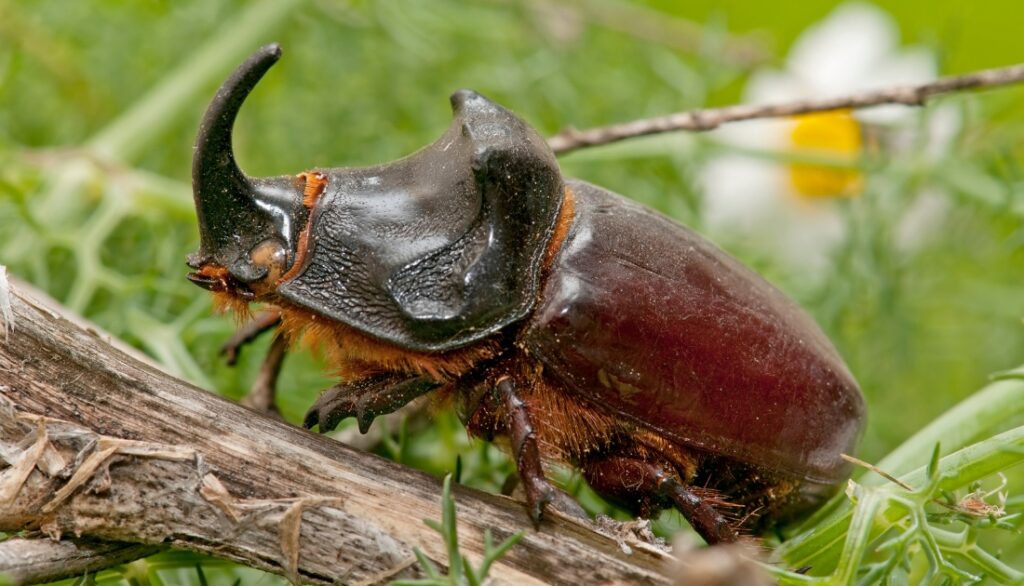
While considerably smaller than their namesake, these beetles rank among the world’s largest, capable of growing up to six inches.
Similar to rhinos, these beetles exhibit strength and power, showcasing an ability to lift objects exceeding 30 times their own weight.
7. Rhino Iguana
The rhino iguana, a substantial lizard inhabiting the tropical Caribbean islands, earns its name from a bony protrusion on its snout resembling a rhino’s horn.
These distinctive creatures often feature gray skin akin to rhinos, with occasional variations in dull brown or dark green hues.
While predominantly herbivorous like rhinos, they occasionally incorporate small insects into their diet. Both rhinos and rhino iguanas are generally docile unless provoked, potentially displaying aggression when threatened.
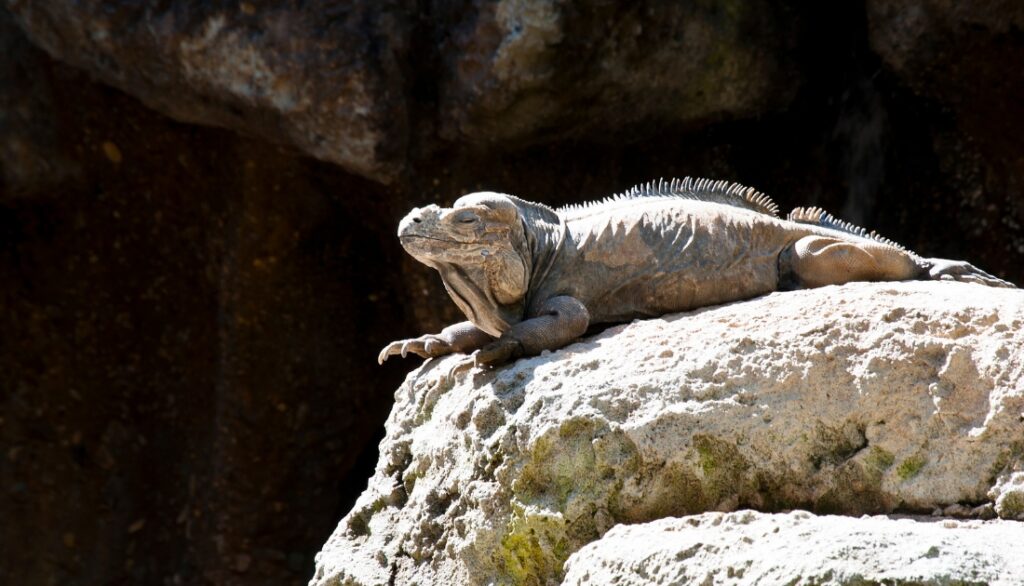
Belonging to the Iguanidae family, rhino iguanas, although diminutive compared to rhinos, are sizable for lizards, weighing between 10 to 19 pounds.
8. rhino viper
The rhino viper, a serpent boasting a horn-like scale on its nose akin to a rhino’s horn, is also recognized as a river jack or butterfly viper. Inhabiting the tropical forests and wetlands of Central and West Africa, these distinctive snakes typically measure around 3-4 feet, occasionally reaching lengths of up to 7 feet.
Unlike their herbivorous rhino counterparts, rhino vipers have a distinct diet, preying on rodents, fish, and frogs.
Despite their horn-like feature, it’s important to note that rhino vipers are not related to rhinos. They fall within the Bitis genus, encompassing various species of venomous snakes.



